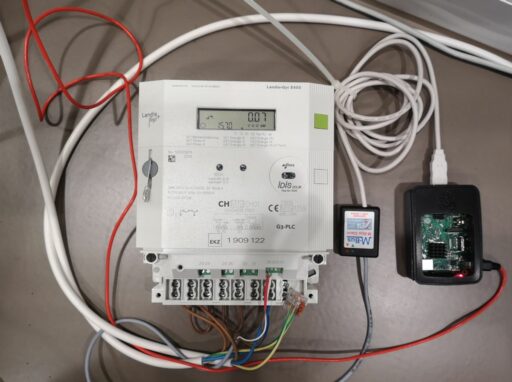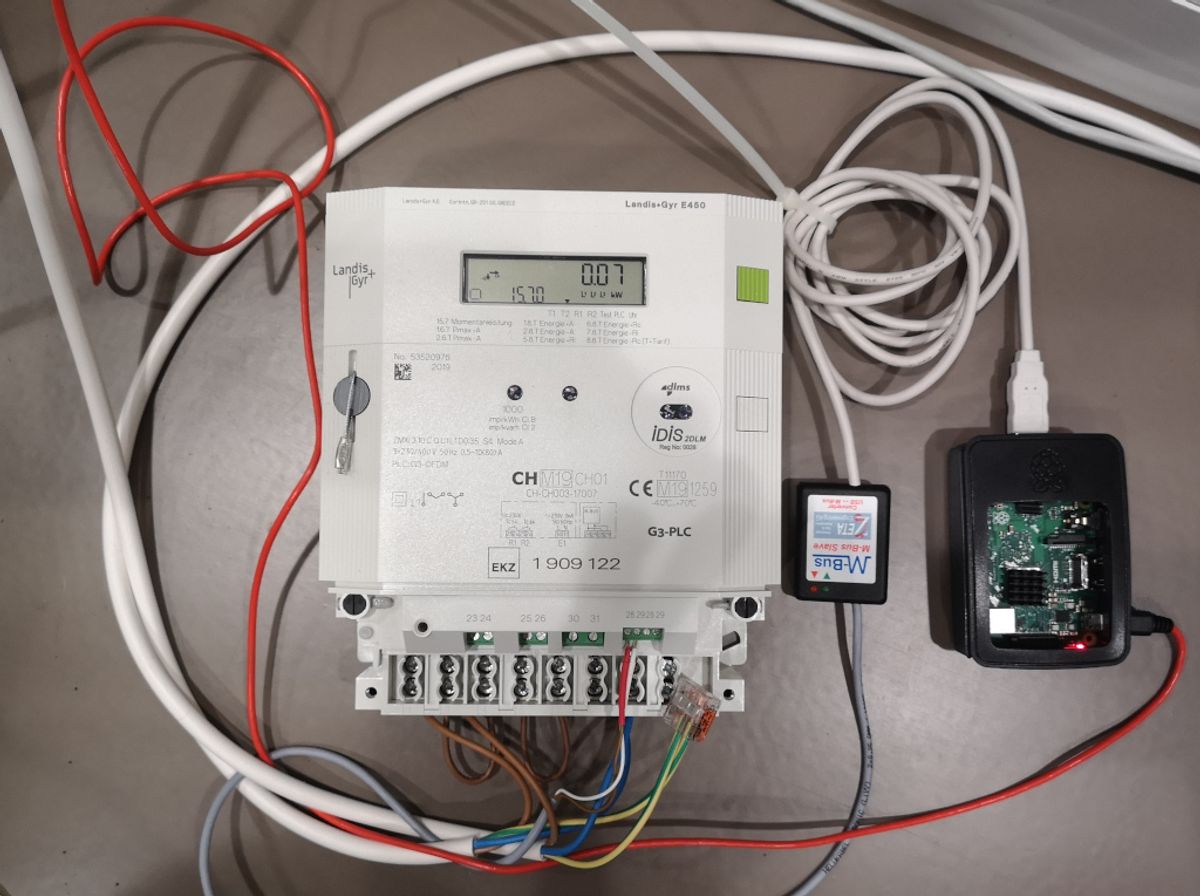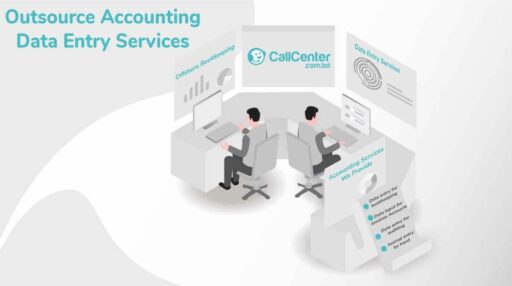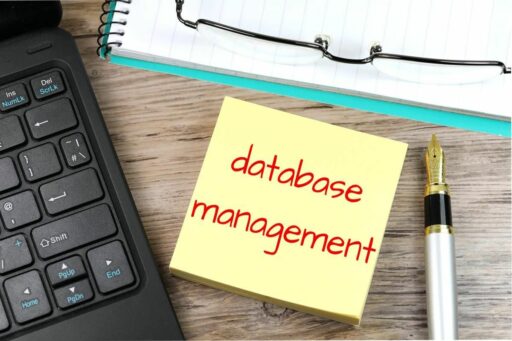Table of Contents
In the digital era where online streaming, gaming, and browsing are part of daily life, managing your data usage is crucial, especially when dealing with Comcast’s data cap. This article provides a comprehensive guide on navigating Comcast’s data cap policy, offering strategies for managing data usage, understanding the role of VPNs, dealing with bandwidth throttling, and maximizing your internet experience with Comcast Xfinity. Armed with these tips and tricks, consumers can maintain control over their internet consumption and avoid unexpected charges.
Key Takeaways
- Comcast’s Xfinity plans often include a 1.2TB data cap, with additional charges of $10 per 50GB of data overage, which can be avoided by monitoring and managing your data usage effectively.
- VPNs can play a crucial role in preventing bandwidth throttling by Comcast, making them a valuable tool for maintaining internet speeds and privacy.
- Understanding the difference between data caps and bandwidth throttling is essential for Comcast consumers to effectively address issues related to internet speed and data usage.
- Consumers should be aware of their legal and consumer rights regarding internet speed and take proactive measures to address throttling issues with Comcast.
- Leveraging discounts and deals on VPN services can enhance your internet experience with Comcast Xfinity, especially for activities prone to throttling, such as streaming and torrenting.
Understanding Comcast’s Data Cap Policy

The Basics of Comcast’s 1TB Data Limit
Comcast’s Xfinity service implements a data cap policy that affects how customers use their internet services. Most Xfinity packages come with a 1.2TB data cap per month, which is a significant amount of data for the average user. To put this into perspective, 1TB of data allows for approximately 500 hours of HD video streaming, which is more than sufficient for a typical two-member household.
However, exceeding this limit incurs additional charges. Comcast charges $10 for every 50GB of data used beyond the cap. For users with higher data needs, Comcast offers the xFi Complete service for an additional $25 per month, which provides unlimited data usage.
It’s important to understand that data caps are not the same as bandwidth throttling. Data caps are about the total amount of data transmitted, while throttling can occur based on the type of online activity, regardless of the data amount.
Here’s a quick breakdown of the additional charges:
| Data Usage (GB) | Additional Cost ($) |
|---|---|
| 1,201 – 1,250 | 10 |
| 1,251 – 1,300 | 20 |
| 1,301 – 1,350 | 30 |
| … | … |
Understanding these details is crucial for managing your internet usage and avoiding unexpected charges on your monthly bill.
Additional Charges and What They Mean for You
When it comes to understanding the additional charges on your Comcast bill, it’s important to be aware of the fine print. Xfinity’s promotional rates are appealing, but they are subject to increase after the initial promotion period, typically resulting in a $20 to $30 jump in your monthly bill. This can lead to an unpredictable billing experience, so it’s crucial to budget accordingly.
Be mindful of the various fees that may apply. For instance, TV-only customers might face installation charges, and most cable services tack on additional fees such as a broadcast TV fee or a regional sports fee, which can be substantial.
Here’s a quick breakdown of potential extra costs you might encounter:
- Installation fees for TV service
- Broadcast TV fee (up to $24.95 per month)
- Regional sports fee (up to $26.85 per month)
- Taxes, which vary by state
Remember, these fees are in addition to your regular monthly rate and can significantly impact your overall bill. It’s also worth noting that internet speeds may vary by location, which can affect your service quality and data usage.
Comparing Data Caps Across Different Xfinity Plans
Comcast Xfinity offers a variety of plans, each with its own data cap specifications. Most Xfinity customers are on plans with a 1TB or 1.2TB monthly data cap, which is generally sufficient for average household usage. However, exceeding these caps incurs additional charges. For instance, going over the limit will cost you $10 for every additional 50GB of data used.
For those with higher data needs, Xfinity provides options to avoid these overage fees. The xFi Complete service, for example, offers unlimited data for an extra $25 per month. It’s important to weigh the cost of potential overages against the flat rate of an unlimited plan.
| Plan Type | Data Cap | Overage Fee | Unlimited Data Option Cost |
|---|---|---|---|
| Standard | 1TB | $10/50GB | Not Available |
| Enhanced | 1.2TB | $10/50GB | +$25/month |
While the typical two-member household may not exceed a 1TB cap, considering the equivalent of 500 hours of HD video streaming, larger households or those with heavy streaming habits should carefully consider their plan choice.
Strategies to Manage Your Data Usage

Monitoring Your Monthly Data Consumption
Keeping track of your data usage is crucial, especially if you’re on a plan with a data cap. Comcast Xfinity users can monitor their monthly data consumption through the Xfinity My Account app or the Xfinity website. By regularly checking your data usage, you can avoid unexpected overage charges and better manage your internet activities.
To effectively monitor your data usage, consider the following steps:
- Review your monthly data consumption in the Xfinity My Account app.
- Set up alerts to notify you when you’re approaching your data limit.
- Analyze which activities are consuming the most data and adjust accordingly.
Proactive monitoring of your data usage can help you make informed decisions about your internet consumption and avoid overage fees.
Remember, most Xfinity packages come with a 1.2TB data cap, and exceeding this limit can result in additional charges. For instance, you’ll be charged $10 for every 50GB of data over the cap. Understanding your data consumption patterns is the first step towards optimizing your internet usage and staying within your monthly data allowance.
Tips for Reducing Data Usage Without Sacrificing Quality
In the age of high-definition streaming and multi-device connectivity, managing your data usage is crucial to avoid overage charges without compromising on quality. Adjusting your streaming settings can significantly reduce data consumption. For instance, streaming in standard definition (SD) rather than high-definition (HD) can save a substantial amount of data. Here’s a quick guide to understanding how different activities consume data:
- Email and web browsing: Minimal data usage, typically not a concern.
- Streaming music: Moderate usage, consider lower bitrate options.
- HD video streaming: High usage, consider SD for less important content.
- 4K video streaming: Very high usage, reserve for special viewing occasions.
By being mindful of the quality settings on your streaming services, you can enjoy a rich online experience while keeping data usage in check.
Another effective strategy is to leverage your home Wi-Fi whenever possible, as data used over Wi-Fi does not count against your Comcast cap. Additionally, regularly monitoring your data usage through Comcast’s Xfinity My Account app can help you stay on top of your consumption and make adjustments before reaching your limit.
When to Consider Upgrading to Unlimited Data Plans
As you monitor your monthly data usage, you may find that consistently exceeding the 1.2TB cap results in additional charges that can quickly add up. Upgrading to an unlimited data plan might be a cost-effective solution if you frequently find yourself paying for extra blocks of data. Here are some scenarios where considering an unlimited plan makes sense:
- Your household has multiple users streaming, gaming, and downloading simultaneously.
- You work from home and rely on a stable, high-bandwidth internet connection.
- You use data-intensive applications or participate in large file sharing.
The Xfinity xFi Complete service offers unlimited data for an additional $25 per month, which could be a wise investment to avoid overage fees. Remember, the value of an unlimited plan is in the peace of mind it provides, knowing that your bill won’t spike due to unforeseen data needs.
It’s important to weigh the cost of potential overage fees against the price of an unlimited plan. In some cases, the latter may prove to be more economical in the long run, especially for data-heavy users.
Data as of 04/05/2023. Offers and availability vary by location and are subject to change. Plus taxes and fees.
The Role of VPNs in Navigating Data Caps

How VPNs Can Help Avoid Bandwidth Throttling
Bandwidth throttling is a technique used by Internet Service Providers (ISPs) like Comcast to regulate network traffic and minimize bandwidth congestion. This practice often results in slower internet speeds for certain online activities, particularly during peak usage times. Using a VPN can effectively prevent Comcast from throttling your internet connection because it encrypts your data, making it difficult for your ISP to discern the type of traffic or services you are accessing.
When you connect to a VPN, your online activities are routed through a secure server, hiding your data from potential throttling. This means that whether you’re streaming, gaming, or engaging in peer-to-peer file sharing, your experience remains unaffected by ISP limitations.
Here are some benefits of using a VPN to avoid bandwidth throttling:
- Encrypts your internet traffic to conceal your online activities from your ISP
- Helps maintain consistent internet speeds, even during periods of high network congestion
- Allows access to services and websites without being subjected to ISP-imposed restrictions
It’s important to choose a reputable VPN service that can provide strong encryption and a variety of server locations to ensure the best performance and avoid any potential throttling by Comcast.
Choosing the Right VPN for Comcast Xfinity
Selecting the ideal VPN for Comcast Xfinity requires considering several factors to ensure you get the best balance of speed, security, and price. A VPN that excels in these areas will enhance your internet experience while keeping your data private.
When evaluating VPNs, consider the following:
- Speed and Performance: Essential for uninterrupted streaming and browsing.
- Security Features: Look for strong encryption and a no-logs policy.
- Price: Compare the value offered by different subscription plans.
- Ease of Use: User-friendly interfaces make setup and operation simple.
- Customer Support: Reliable support is crucial for troubleshooting.
Remember, a VPN not only secures your online activities but can also help in circumventing bandwidth throttling imposed by ISPs.
Our research indicates that NordVPN and Surfshark are among the top contenders for Comcast Xfinity users, offering a blend of speed, security, and affordability. Here’s a quick comparison:
| VPN Service | Speed | Security | Price | User-Friendly | Customer Support |
|---|---|---|---|---|---|
| NordVPN | Fast | Strong | $$ | Yes | 24/7 |
| Surfshark | Fast | Strong | $ | Yes | 24/7 |
Choosing the right VPN is a personal decision, but with the right information, you can make an informed choice that will protect your privacy and improve your Comcast Xfinity experience.
Setting Up a VPN on Comcast Xfinity Routers
Setting up a VPN on your Comcast Xfinity router can enhance your online privacy and security by encrypting your internet connection for all devices in your home. This is particularly beneficial for devices that don’t natively support VPN software, such as smart TVs and gaming consoles.
To ensure a smooth VPN setup on your router, consider the following steps:
- Verify if your router supports VPN functionality. Most Comcast Xfinity routers, including the xFi Gateway, do not support VPNs by default.
- If your router is not VPN-compatible, you may need to acquire a third-party router that supports VPN connections.
- Choose a reputable VPN provider, like NordVPN, which offers pre-configured routers and firmware for easier management.
- Follow the VPN provider’s instructions to integrate the VPN with your router, paying close attention to details like server selection and network configurations.
- Utilize features like split-tunneling to select which devices connect through the VPN and which connect directly to the internet.
Remember, while setting up a VPN on a router can seem daunting, it’s a one-time process that provides ongoing protection for all your connected devices.
By taking these steps, you can bypass the limitations of IPv4 and enjoy the benefits of a secure, encrypted connection across your entire network.
Dealing with Bandwidth Throttling

Identifying Signs of Throttling by Comcast
Experiencing slower-than-usual internet speeds, especially during peak hours or when engaging in specific online activities, can be a telltale sign of bandwidth throttling by Comcast. Users often report reduced speeds when accessing game servers, streaming platforms, and torrent sites. This intentional slowdown is not just frustrating but can significantly disrupt your online experience.
To determine if you’re being throttled, consider the following points:
- Consistent slow speeds on certain websites or services, while others work fine.
- A noticeable decrease in speed during specific times of the day.
- Difficulty in uploading or downloading files, particularly with peer-to-peer networks.
If you’re facing persistent slow speeds and suspect throttling, it’s crucial to document your internet performance over time. This can help in identifying patterns that suggest intentional speed reductions.
Remember, Comcast’s Acceptable Use Policy mentions network management for customers consuming excessive bandwidth. Therefore, understanding your data usage and Comcast’s policies is essential in addressing potential throttling issues.
Legal and Consumer Rights Regarding Internet Speed
Consumers are entitled to certain rights when it comes to internet speeds and service quality. Understanding your rights can help you address throttling issues effectively. For instance, the law ensures that participants in certain programs can access high-speed internet at minimal or no cost, which is crucial for maintaining consistent connectivity.
- Know your rights: Familiarize yourself with the terms of service and the consumer rights provided by your ISP.
- Document any issues: Keep a record of speed tests and correspondence with your ISP regarding speed concerns.
- Seek assistance: Utilize resources like EveryoneOn’s locator tool to find service options based on financial criteria.
Consumers have options for discounted high-speed internet, ensuring access to necessary services without exorbitant costs.
It’s important to be aware of the speed you’re promised versus what you actually receive. If you’re experiencing slower speeds than advertised, it may be a case of throttling. In such instances, documenting your internet speed and reaching out to your ISP can be the first steps towards resolution.
Best Practices for Addressing Throttling Issues
When experiencing bandwidth throttling, it’s essential to first verify that the slowdown is indeed due to your ISP’s intervention. Use speed tests and monitor your connection at different times to gather evidence of inconsistent speeds. If throttling is suspected, consider the following steps:
- Contact Comcast customer support to inquire about the reasons for throttling and to express your concerns.
- Review your current plan and usage to ensure you are not exceeding data limits that may trigger throttling.
- If the issue persists, file a complaint with the Federal Communications Commission (FCC) as they oversee ISP practices.
Remember, maintaining open communication with your ISP and staying informed about your consumer rights can empower you to address throttling effectively.
Lastly, explore technical solutions such as using a Virtual Private Network (VPN) to prevent your ISP from monitoring and potentially throttling specific types of traffic. However, be aware that while VPNs can help maintain privacy, they are not a guaranteed solution against all forms of bandwidth management.
Maximizing Your Internet Experience with Comcast

Leveraging Discounts and Deals on VPN Services
In the quest to maximize your internet experience with Comcast, finding the right VPN service at an affordable price is crucial. Many VPN providers offer competitive discounts and deals, which can significantly reduce the cost of maintaining your privacy and avoiding bandwidth throttling. Here’s a quick guide to help you navigate these offers:
- Always check for long-term subscription deals, as they often provide the best value.
- Look out for special promotions during holidays or events like Cyber Monday.
- Consider using a coupon code, which can be found on VPN review sites or through affiliate links.
Remember, while price is important, it’s also essential to balance cost with the quality of service and the features offered by the VPN.
When evaluating VPN services, take note of the money-back guarantee periods and the ratings given by reputable sources. This information can help you make an informed decision without committing long-term. Below is a table summarizing some current deals:
| VPN Service | Best Deal | Money-Back Guarantee |
|---|---|---|
| NordVPN | $3.39/mo | 30 days |
| Surfshark | $2.29/mo | 30 days |
| ExpressVPN | $6.67/mo | 30 days |
| IPVanish | $2.75/mo | 30 days |
By taking advantage of these deals, you can enjoy a robust VPN service without breaking the bank. Just be sure to review the terms and conditions to understand what you’re signing up for.
Understanding the Impact of Streaming and Torrenting
Streaming and torrenting are two of the most data-intensive activities a user can engage in. Streaming in high-definition (HD) or 4K can consume an immense amount of data, quickly eating into your Comcast data cap. For instance, streaming a 4K movie could use as much as 7GB per hour. On the other hand, torrenting involves both downloading and uploading files, which can also lead to significant data usage.
It’s crucial to be aware of how these activities impact your data cap, as they can lead to additional charges if not managed properly.
Here’s a quick look at how different streaming qualities affect data consumption:
| Quality | Data Usage per Hour |
|---|---|
| Standard (SD) | 1GB |
| High-Definition (HD) | 3GB |
| 4K Ultra HD | 7GB |
To manage your data effectively, consider the following:
- Monitor your streaming resolution settings, opting for lower quality when possible.
- Limit torrenting to essential files and be mindful of upload settings, as this can double your data usage.
- Utilize Comcast’s data usage meter to keep track of your consumption and adjust your activities accordingly.
Proactive Measures to Ensure Consistent Speeds
Ensuring consistent internet speeds with Comcast Xfinity requires a proactive approach. Regularly monitoring your connection speeds at different times of the day can help identify patterns of slowdown. For instance, conducting speed tests during peak usage hours and comparing them to off-peak times can provide valuable insights into your service’s performance.
- Schedule regular speed tests, both during peak and off-peak hours.
- Investigate and optimize your home network setup, such as the placement of routers and the use of mesh networks for better coverage.
- Consider the benefits of symmetrical upload and download speeds, especially if your household has high demands for gaming, content creation, or telecommuting.
By taking these steps, you can better manage your expectations and plan your internet usage around the times when you’re likely to get the best performance. This proactive stance can help mitigate the impact of any potential bandwidth throttling and ensure a smoother online experience.
Conclusion
Navigating Comcast’s data cap can be a challenging task, but with the right knowledge and tools, consumers can manage their data usage effectively. Understanding the 1.2TB data cap and the associated overage charges is crucial. Utilizing VPNs can help prevent throttling and maintain privacy, ensuring a smoother online experience. By staying informed about Comcast’s policies and exploring options like xFi Complete for unlimited data, customers can avoid unexpected fees and enjoy their internet service to the fullest. Remember, staying vigilant about your data consumption and taking proactive steps can make all the difference in optimizing your Comcast Xfinity experience.
Frequently Asked Questions
What is Comcast’s data cap policy?
Most Xfinity customers have a 1TB monthly data cap. If you exceed this limit, Comcast will charge you $10 for every additional 50GB of data consumed.
Can using a VPN help me avoid Comcast’s data cap?
No, VPNs do not prevent you from going over your ISP’s data cap. Data caps are based on the total amount of data transmitted, regardless of whether a VPN is used.
How can I tell if Comcast is throttling my internet speed?
If your internet speed slows down during activities like streaming or torrenting, it may be a sign of throttling. Using a recommended VPN can help determine if speeds improve, indicating possible throttling.
What are the best VPNs to use with Comcast Xfinity?
The best VPNs for Comcast Xfinity in 2024 include NordVPN and ExpressVPN, which can help overcome bandwidth throttling and keep your online activity private.
How much data does the typical household consume per month?
A typical two-member household usually consumes less than 1TB of data per month, equivalent to about 500 hours of HD video streaming.
What options are available if I frequently exceed my data cap?
If you often exceed your data cap, you can opt for the xFi Complete service from Xfinity, which offers unlimited data for an additional $25 per month.





